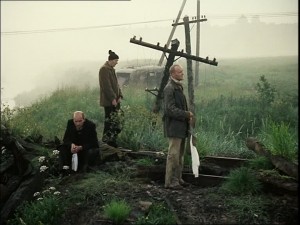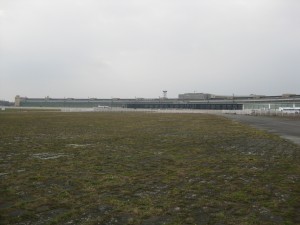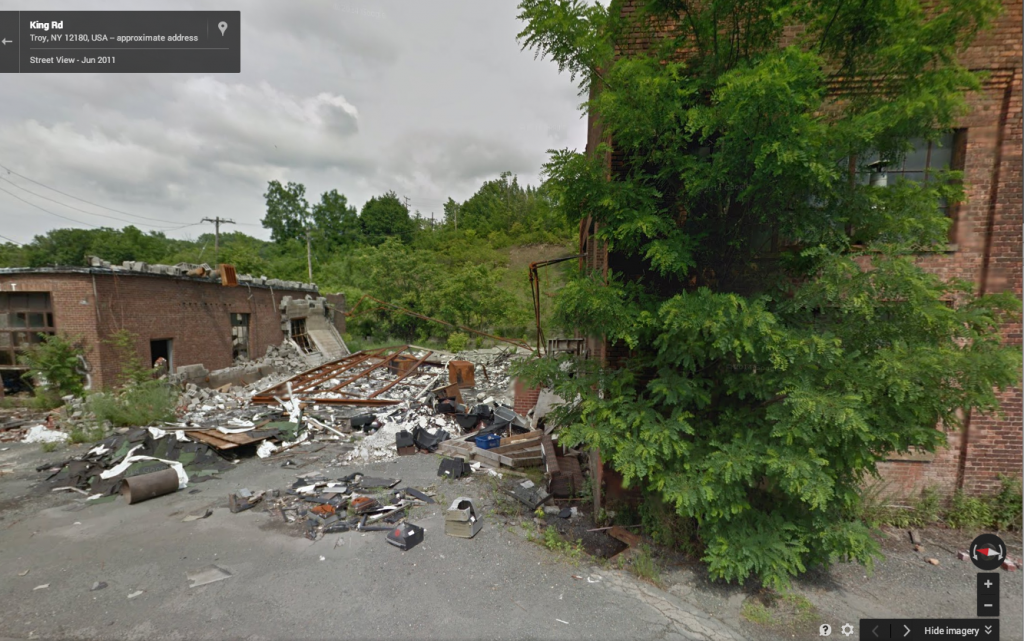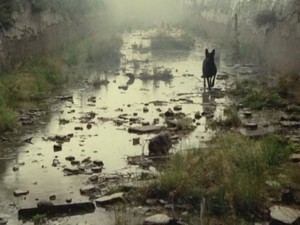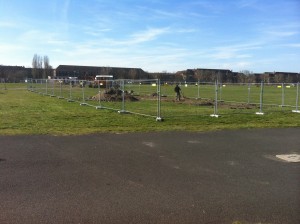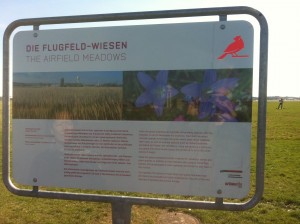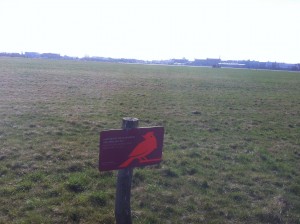In Tarkovsky’s 1979 film Stalker, a mysterious guide leads a couple of characters known only as ‘the writer’ and the ‘professor’ into a post industrial ‘zone of alienation’ where it is promised one’s innermost wishes can be granted and where the rules of physics no longer apply. The ‘Zone’ is completely abject, a place of weeds, broken machinery and the ruins of factories and yet it is hauntingly beautiful in a way that is triggered (perhaps) by our deep yet unconscious familiarity with such landscapes –the places Walter Benjamin called the optical subconscious, the quotidian zones in which we are so fully at home we don’t even realize we live there.
These aren’t the iconic, aspirational landscapes of snow-capped mountains, palm fringed coral beaches and glittering urban skylines –the stuff of screen savers and photo murals in tacky restaurants, but rather the prosaic localities we continuously experience, perceiving them peripherally, from the corners of our eyes yet rarely explicitly acknowledging. The French term ‘terrain vague’ comes closest to the way these places feel and they might take the form of a trash-strewn railway embankment or an abandoned car park with rank vegetation coming up through the broken pavement or perhaps one of those forlorn, zones of contamination we refer to as brownfields, which have become the global hallmark of industrial decline.
I think back on my Amtrak journeys through the rust belt of America, marvelling at the Piranesian grandeur of once opulent railway stations left to crumble at the trackside, the ruined vaults now sheltering only birds which dart in and out of the shattered arrays of windows. The train keeps chugging lethargically (it is Amtrak after all, itself a symbol of decline in American technological ambition) through dour, neglected expanses, prosaic, ugly, endless –you can’t really call it ‘countryside’ exactly– but for the occasional scruffy woodlot and oily wetland which passes between the wrecking yards, quonset huts and derelict factories. This is (as Deleuze might call it) a ‘striated’ landscape that interleaves the decaying residue of a once prosperous age of material production with a resurgent, weedy nature –an ecology of discard, a ‘zone of alienation’ where anything might appear– a muddy field strewn with bone white shards of dishes and upturned toilet bowls, the twisted wreckage of a carnival rides left over from, what? A tornado? Perhaps, even–though I did not experience it–the fulfillment of one’s deepest wishes…
But is this not the state of the world as we all now know it? It’s the Anthropocene, baby, and collectively we’ve chewed up every inch of biosphere; extirpating, contaminating and cultivating ourselves into this, the global ‘Nature 2.0’ reality, where even the unfolding of weather and the chemistry of the oceans have become extensions, artifacts of human existence. So past the point of no return are we that we might as well discard nostalgic notions of ‘wilderness’ and adopt a new, Anthropocenic grammar, already envisioned by the likes of Žižek and Morton, which more aptly describes the hybridized, pervasively humanized environment in which we now live.
Our planet has essentially become one, big ruderal ecology (from the Latin ‘rudus’ meaning rubble), characterized by the large-scale extinction of species–passenger pigeons, big cats, rhinos–as well as entire ecosystems–Madagascar, the Arctic, coral reefs. And yet there is a curious, parallel process of adaptive evolution occurring in the disturbance ecologies and debris fields (called anthromes) we leave in our wake.
At Chernobyl (one of the greatest ecological and social messes we have ever been responsible for, a byword for lethal, irreparable contamination and epic technological failure) some bird species–and by no means all of them, as many kinds there have significantly declined–but certain bird species seem to be surviving by evolving a tendency to produce more cancer-fighting antioxidants which help resist the effects of the pervasive radiation. Scientists are calling this “unnatural selection” and it is already driving evolutionary change.
In much of eastern North America, the wolf was largely wiped out during European colonization but it has recently come back not as a wolf exactly, but a kind of hyperorganism–a three way hybrid between wolf, dog and coyote that pushes the boundaries of what it even means to be a species. With the precipitous decline of the ancestral wolf, an ‘eye of the needle’ effect ensued in which wolf genetics became more ‘soluble,’ more open to other singularities and contagions, a necessary precondition for the evolution of a new, protean canid, able to prosper in the niche now available for some canny predator able to exploit the pervasively humanized and ecologically degraded environment of second growth forest and exurban sprawl–the kind of places that are an anathema to the so-called ‘pure’ wolves of the primeval wilderness but which offer abundant prey resources of lawn-fed deer and genetically moronic pets. Enter the ‘Coywolf’ or Eastern coyote. They might be a product of ‘unnatural’ selection, but they sure are hungry!
Such novel recombining is occurring at a multi-species level too, with entirely new hyperecologies evolving as weedy, native species commingle with invasive exotics, all of them jostling and repositioning themselves into configurations that never would have existed ‘naturally’ but which now comprises recognizable and widespread landscapes of brownfield savannah and emergent, wasteland forest that are found throughout the world in pretty much any place we have exploited and then turned our back on. Many of these organisms are the hardy cosmopolitan nomads we are all used to seeing, such as tree of heaven (also known as the ’garbage palm’), black locust, pigeons and rats, but perhaps surprisingly these unprepossessing assemblages can support a diverse array of other species, some exceedingly rare, which hail from habitats like gravelly steam banks and dry heaths now largely obliterated from a hinterland dominated by chemical intensive farming and vast, ecologically sterile acreages of housing developments and big box stores.
In the UK, where humanized landscapes are particularly well studied, it is estimated that up to 15% of the nationally rare insects and spiders are dependent on brownfields for their survival as do several species of reptiles, orchids and other rare plants.
I was delighted last March to visit the grounds of the now disused Templehof Airport in Berlin, which as a result of citizen pressure has been set aside as a kind of publicly accessible ruderal ecology park. Here one is greeted by the incongruous site of windsurfers careening along miles of abandoned runways while skylarks hover high over vast swathes of tawny grassland, singing and establishing territory in their annual rite of spring.
Along with a surprising diversity of meadow dependent birds – wheatears, shrikes, whinchats and so on, 236 bee and wasp species have been recorded on the grounds, more than 40 of them endangered or near extinction, particularly those dependent on the open, sandy microhabitats that have all but vanished in the over-managed environs of the countryside.
This wonderful interleaving, this striation, this ‘to-ing and fro-ing’, between architectural ruin and ecological renewal is to my mind a tremendously optimistic model for the future of parks in general and for our appreciation of landscape as a whole and it is in promoting this aesthetic that Berlin is very much at the fore. The Templehof park doesn’t try to paper over its problematic Nazi past but lets us grapple with it by preserving the forbidding Fascist architecture and letting us watch archeological excavations of Gestapo prisons and slave labour camps taking place on on its grounds.
At the same time we are offered profound hope by witnessing innate processes of ecological and cultural regeneration get encouraged, not in an over-planned or commercialized way, but from the ground up, in a way that is distinct from the banal, generic late capitalist aesthetic that so frequently defines urban renewal initiatives elsewhere. By being leaving it alone, Templehof is able to renew itself.
Though the global ecological crisis is deep and inestimably tragic, we can perhaps allow ourselves to cautious celebrate the evolution of a new kind of nature, a ruderal nature, where kestrels soar across the heat haze of abandoned runways that are slowly becoming encrusted with lichens and grasses and where rare wild flowers can find a toehold among the rubble of some of history’s worst crimes against humanity. The sky is filled with the coloured sails of paragliders and a bumblebee is making its first foray into the vast warm vault of another spring.
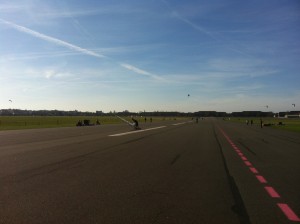
sailing the runways


